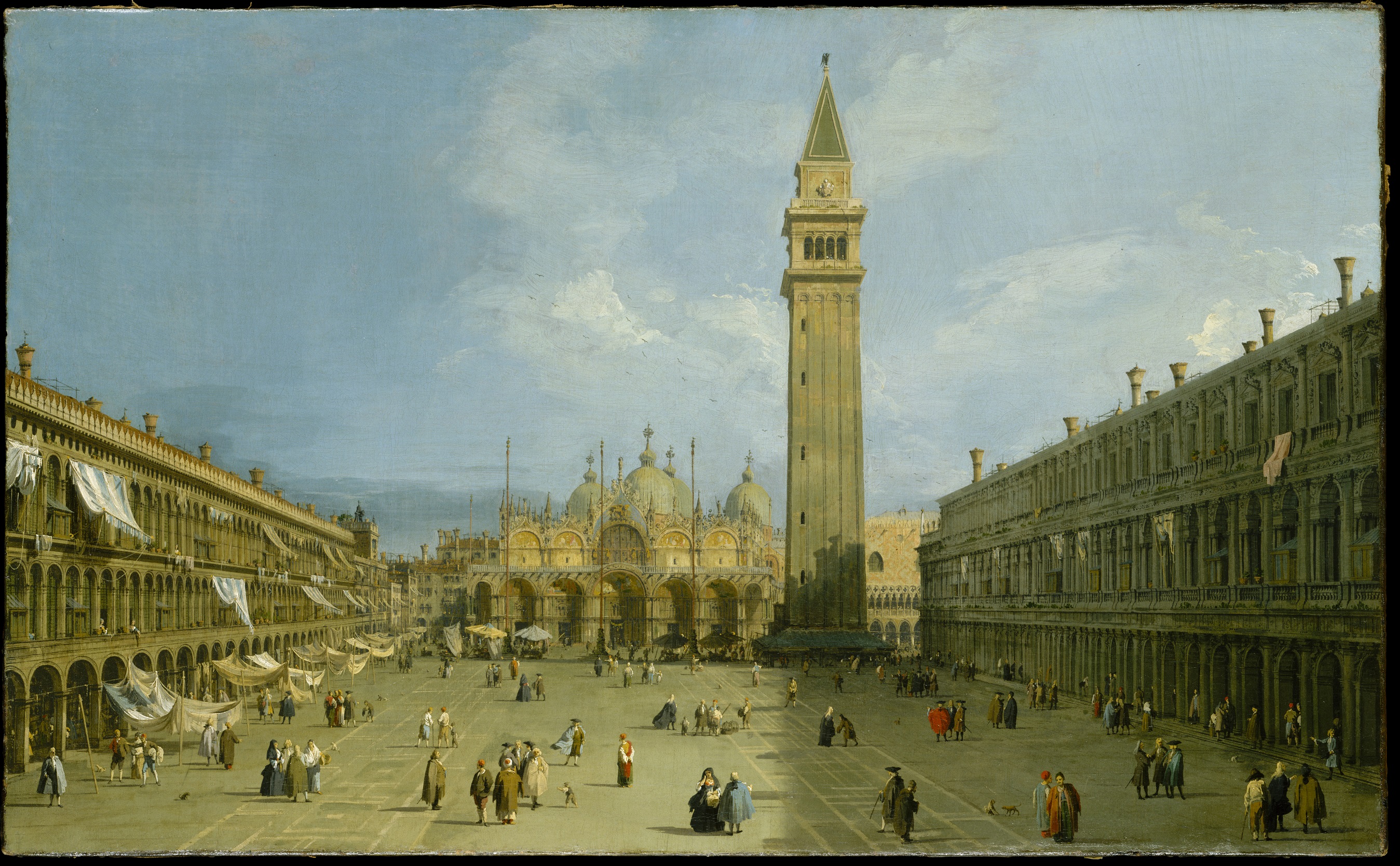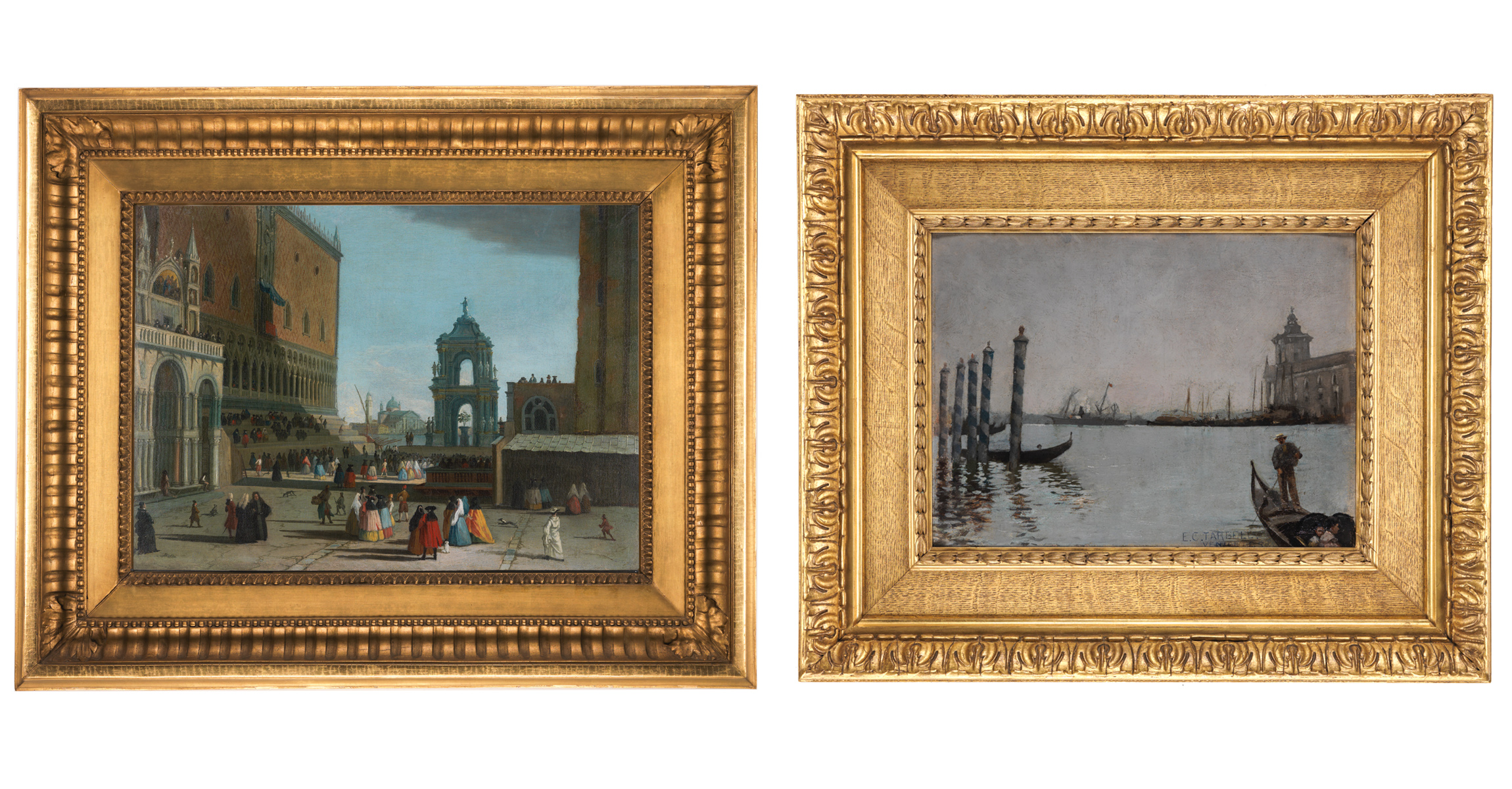 Eustis Estate
Eustis Estate
Venice learning to look 2
Viewers may wonder why the Codmans discounted Canaletto and then Guardi as the painter of this canvas. The answer becomes clearer when we compare it to firmly attributed works by these Venetian masters. The Canaletto illustrated here shows the full sweep of Piazza San Marco, with St. Mark’s Basilica and the Campanile at the far end. Canaletto offers the same detailed account of architecture and costumes seen in the Codmans’ painting, but also a convincing sense of “atmosphere.” Note, for example, the delicacy and variation of Canaletto’s clouds, and how his air seems to shimmer with the humidity that characterizes this port city.

Francesco Guardi was fifteen years younger than Canaletto and won praise for his looser handling, which was more fashionable by his time. In this example depicting the Piazzetta—where the stage and bleachers appear in the Codman painting—Guardi shows us the same architecture and similar pedestrians, but his brushwork is not as meticulous. Because it is less exact, it conveys a sense of movement we might describe today as Impressionistic. The painter of the Codman painting was not interested in such dynamism, focusing instead on the pomp about to unfold.

The unattributed Codman painting’s emphasis on architecture and civic life contrasts strikingly with a much later view of Venice displayed on the ground floor of Eustis Estate. In his dreamily Impressionistic vision of a gondolier awaiting passengers, the “Boston School” painter Edmund Tarbell shifted viewers’ attention away from the city’s buildings toward its broad lagoon and the bustling maritime industries indicated by the many masts visible. Learn more about Tarbell’s painting Waiting. Morning Effect. Venice, below.

Right: Edmund Charles Tarbell (1862–1938), Waiting. Morning Effect. Venice, 1885, oil on panel, 19” x 22 ¼ in., Museum Purchase, 2019.25.1.